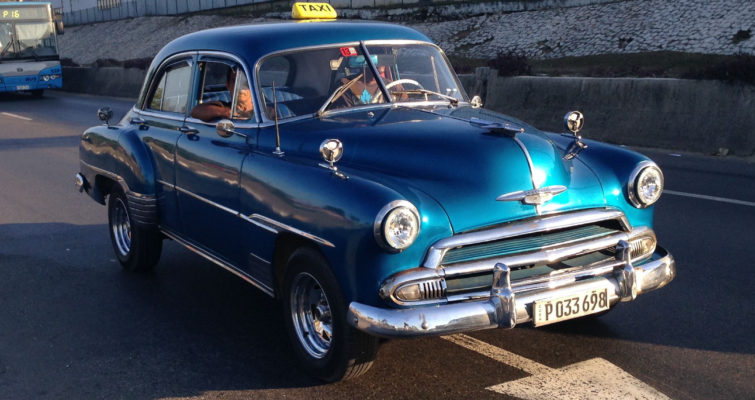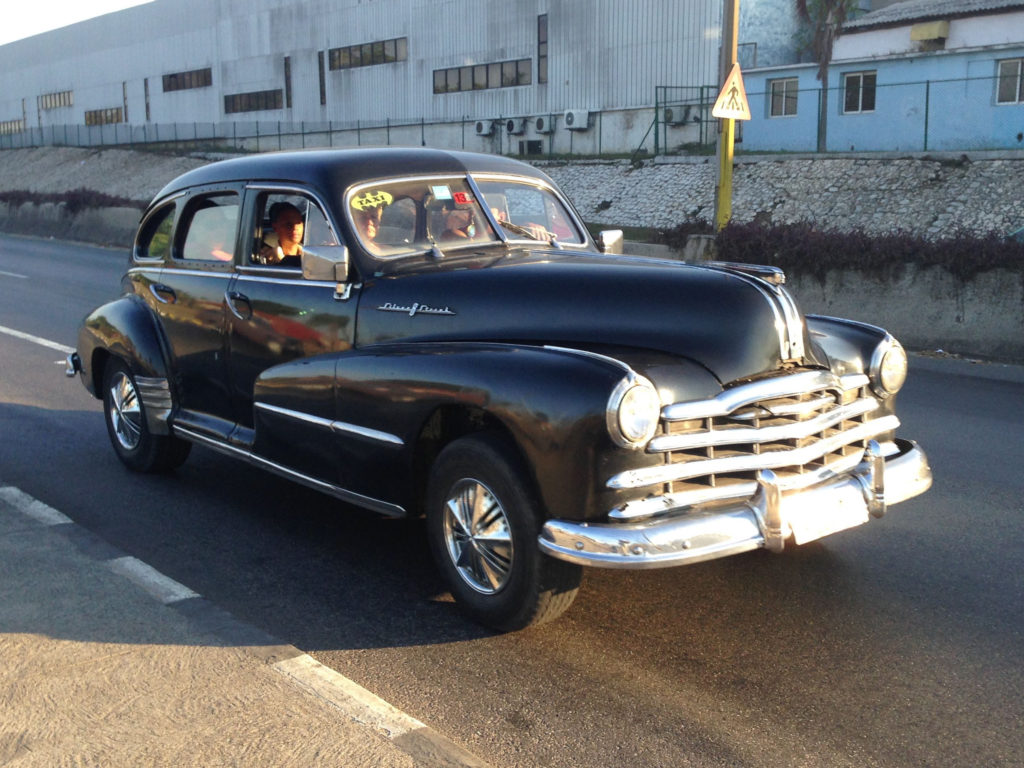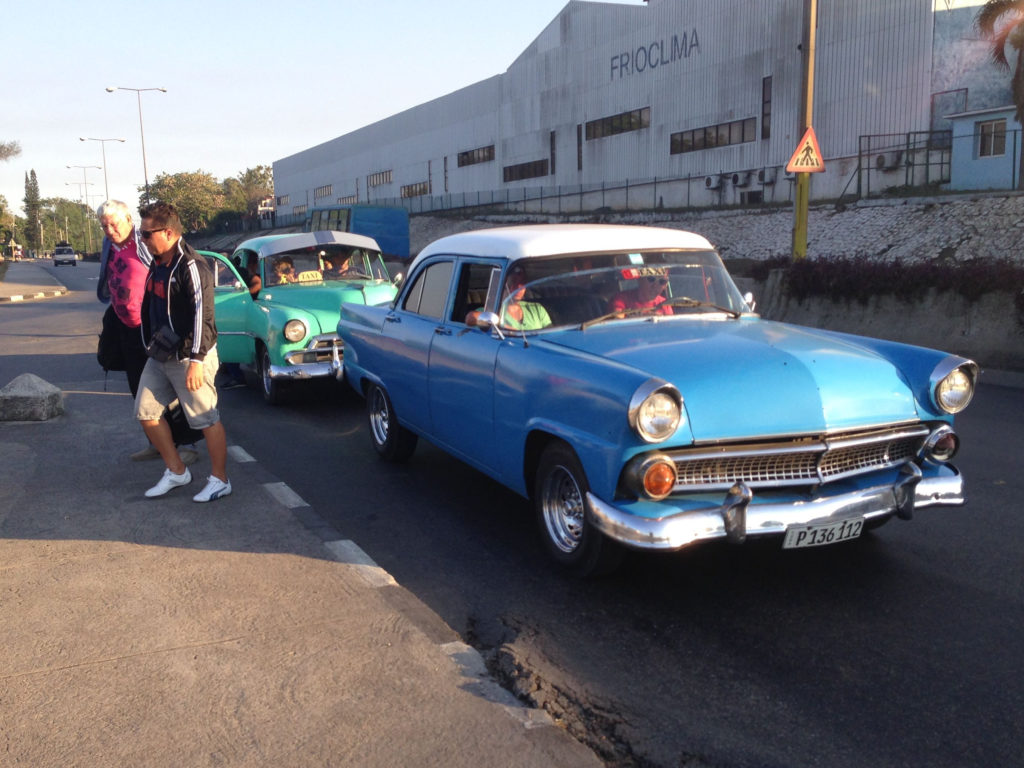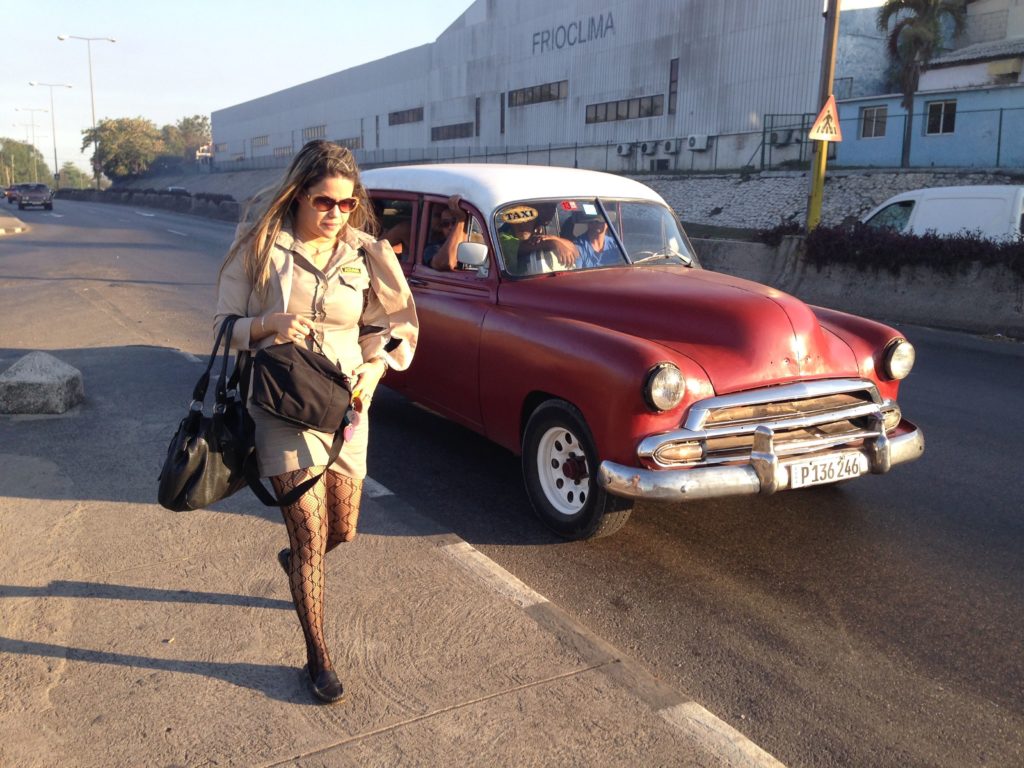
Cuba’s patchwork transportation system, part 1: The máquina!
I keep hitting milestones in my Cuba travels… and a lot of them involve relationships. For example, one milestone was the first time a Cuban friend trusted me enough to tell me everything they hate most about life in Cuba. Another was being asked to record a song with a Cuban band I’m friendly with.
Other milestones are just about learning my way around and feeling increasingly savvy as a foreign visitor. My latest is getting proficient with Havana’s transportation system. That’s been hard for a number of reasons, but mostly because I spent a long time just taking taxis everywhere. In the areas where foreigners tend to go, there’s almost always a taxi driver stalking you ready for you, and it’s easy just to rely on that. For convenience and simplicity, you can’t beat them. Plus, you never know who you’ll meet driving the cabs. People from all walks of life become cab drivers, because in Cuba this pays better than almost any other job. It makes for some fascinating conversations.

This is a máquina, or Cuban collective taxi. The billboard behind it reads: The Revolution Will Continue Forward
But Cubans themselves generally don’t use private taxis. That’s a tourist thing. Little by little, I’ve learned some of the bus routes… and more importantly, the máquina routes. Máquinas (literally “machines”) are sometimes described as collective taxis. They’re like a bus or subway, running a set route, picking up and dropping off passengers along the way. You just get yourself to the route, hop aboard the next one that passes, and ride until you’re ready to get off. There’s a million of them running through the streets at all hours of the day and night. They’re a huge piece of Cuba’s transportation system, and they represent a good tradeoff between convenience and cost.
Máquinas are almost invariably old American cars from the 50’s or earlier. Just like people, some are still in great shape after 60 years, while others really, really aren’t. I’ll never forget the first time I got in one and closed the door after me as forcefully as I close car doors in the U.S. My friend was horrified and taught me to treat them more gingerly. Since then, I often think if we hit just one pothole the wrong way, the whole car’s gonna fall apart around us.
But these old taxis keep plugging along, decade after decade, held together by some crazy combination of jerry-rigging and faith. And in the end, you get where you need to go. To me, that gives the máquinas far more character than the more touristy classic cars, which are all gleaming and in perfect shape.
Here’s how it works. Máquinas constantly drive along the main roads, picking up and dropping off passengers. You stand on the curb and hail them as they’re passing by – sometimes making a gesture to show where you’re headed, like holding out three fingers if you want to ride along 3rd Avenue. When a driver has room for one more, they stop for you. There’s a little back-and-forth as you determine if you’re heading the same way and if the cab’s going as far as you need to go. Maybe (if you’re obviously a gringo, like me) they hit you with an inflated price, and you have to go back and forth on that a little. Then you hop in.
Nobody wants to sit in the front middle seat, and there’s a funny kind of dance that happens if the taxi’s almost full. It’s all about seniority. For example, say that when you hail the cab, that front middle seat is the only one open. Whoever’s riding shotgun will get out of the car, let you into the middle seat, and then get back in after you. Then at the next stop, if someone in back gets out, you can get out yourself and switch to the back. When I’m trying to be a gentleman, sometimes I’ll take a less desirable seat, but I’m not sure I’ve seen Cubans do this themselves.
Who you’ll ride with is kind of a crapshoot, but I’ve never once felt unsafe or unwelcome. People are invariably polite, sometimes quiet and sometimes interested in chatting. If you get lucky, the whole car dives into a loud conversation together, and you make some new (if temporary) friends. The most uncomfortable it ever gets is if some couple wants to make out in the seat next to you. As they say in Cuba, Eso pasa! “That happens!”
I mentioned the trade-off between convenience and cost. A máquina ride of 10 or 15 minutes costs about 50 cents, while a taxi could be 5 or 10 bucks, and a bus is about 2 cents. For a longer trip of 20 or 30 minutes, you could pay a dollar for the máquina, but 15 or 25 for a cab. Máquinas are nice because you don’t have to wait long for one to pass. With buses there’s just no telling, especially at odd hours. The best thing about cabs is, they’re direct, and in certain parts of town they’re very easy to find. For a máquina, you have to walk to the nearest route, catch a ride, and then walk from the route to your destination. And sometimes you have to transfer from one route to another, or you lose a little time waiting for other passengers to get in and out.
Nevertheless, máquinas are by far my favorite way to travel. Between the crazy cars, the low cost, the interactions with drivers and other passengers, and the feeling that I’m traveling a lo cubano… I’ll take the máquina every time!







Write Your Comment